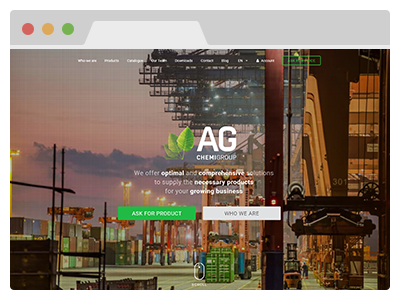When the Chinese Communist Party Congress of October 2017 issued its latest Five-Year Plan, it included a reversal on the policy of ‘Economic Growth at all Costs’. Instead, following years of increasing pollution problems, environmental disasters, dirty rivers, and smog, President Xi Jinping announced his ‘Blue Skies Policy’. A program of factory inspections and emission controls that overnight closed-down thousands of the country’s worst polluting factories.
This naturally affected heavy industries, such as chemical plants and agrichemical production facilities, the most, and it continues to restrict agrichemical output to this day.
As the chemical consultants at Rabobank reported stated in March 2018, “Agrochemical production growth [in China] has been slowing down since 2015, owing to unprecedented environmental compliance pressure, which leads to a strained supply of active ingredients (AI) and intermediates. CAGR of AI production declined sharply from 15.4% (CAGR 2004-2014) to 1.6% (CAGR 2014-2016).”
You can read more about the impact of Chinese environmental policy in other articles in the AG CHEMI GROUP blog page. For example, How Chinese Environmental Policy is Stopping Chemical Production, or Chinese Chemical Prices Surge due to Blue Skies Policy.
The report continues by noting how the restriction in supply is impacting prices, stating, “Environmental protection inspections were extraordinarily strict in 2017, which greatly impacted agrochemical production and AI prices. AI prices have been rising steadily (up 1.6% MOM), while China’s agrochemical price index (CAPI) reached 98.36 in December 2017 (up 32.3% YOY). This is the highest value seen in the last three years.”
Furthermore, one industry insider, C.S. Liew, Managing Director at Pacific Agriscience Ltd. writing for AgriBusinessGlobal, believes that the cuts to agrichemical output will continue. He states that, “Going forward, we can expect that many plants — even after they have qualified and obtained the needed permits to resume production over the spring, summer and autumn periods — will have to operate at a reduced capacity over the coming winter of 2018/19. I surmise that it will be a case of observing what reduction in production will do to the winter pollution levels and then deciding what appropriate measures will be needed over the following years.”
He continues to predict that, “What this means is that the agrichem manufacturing industry will continue to face the kind of drastic measures we saw over the past winter. With the need to improve environmental pollution further to meet international standards over the coming years, disruption in supplies and higher prices of products will certainly be the new normal.”
Noting anecdotally that, “In Shandong Province alone, planned permanent shutdown of plants unable to meet new pollution standards have already started since 2017. The aim for one city there is to have 30% of the plants shut permanently by 2020.”
These are changing times for Chinese agribusiness. As the chemical industry consultancy Rabobank notes, “China’s agrochemical industry has entered a period of radical adjustment. The intensified policy pressure and increased levels of inspection will accelerate the reshuffling and consolidation of the industry, both in horizontal and vertical integration. Manufacturers who have the ability to produce AI and formulation will benefit from this transformation and be able to enhance the strength of continuous production and supply. Backward production capacity will gradually retreat from the market, driven by the increase of environmental protection inspections and standardised administration.”
While this may seem like simple survival of the fittest (and cleanest) agrichem producers, China’s agribusiness sector should take care to embrace further notions of sustainability and the circular economy. As western chemical producers have remained competitive despite strict air and water purity legislation, so may China’s agribusiness sector have to negotiate the changes sweeping through developing AG industries. Slower-growing broiler chickens, zinc oxide feed additive bans, reductions in plastic packaging all burden output and restrict company profits.
Fortunately, it is these market trends and changes that create the opportunities for the savvy agrichemical trader to find profit. Static industries do not open doors. Whereas bad news and rainy weather form golden opportunities for umbrella salesmen.
China needs increasing amounts of food for its growing and ever-richer population. For that it needs more animal feed, feed additives, fertilizer, and agrichemicals. China’s ‘Blue Skies Policy’ is creating opportunities to provide them. As Forbes magazine notes, “Every cloud has a silver lining, and companies and investors clearly see the silver lining in helping China to solve its food problems.”
Client Zone – Be in Touch with All the Important Information

Take the opportunity to register in our client zone to find complete product specifications and latest updates on our offers.
Client Zone Sign Up
Photo credit: AgribusinessGlobal, PhosphatePrice, Newswise & Visiontimes